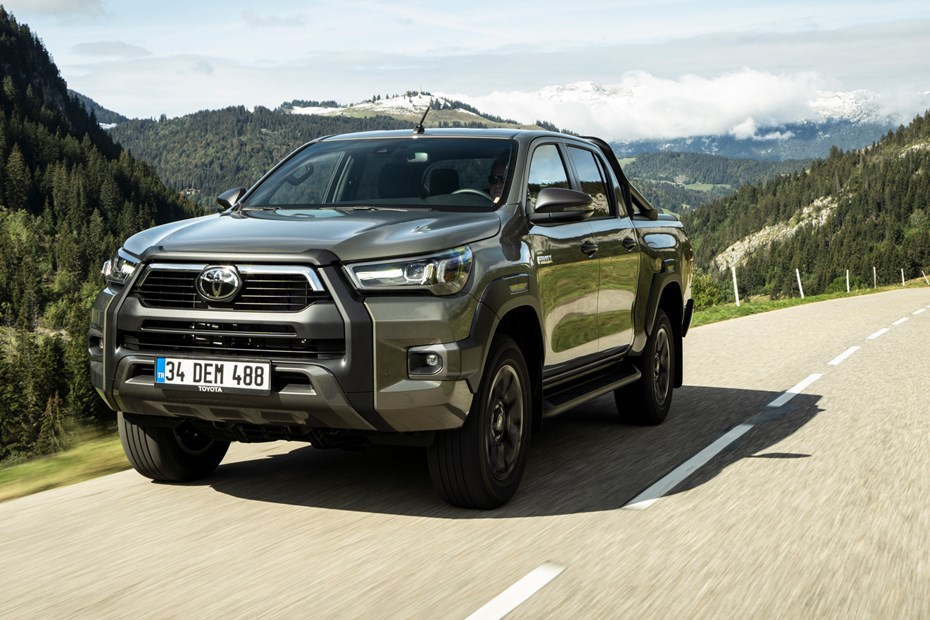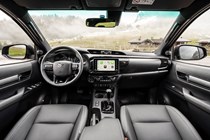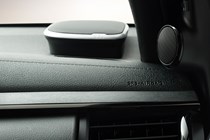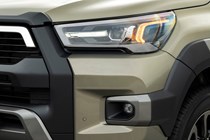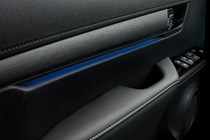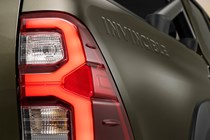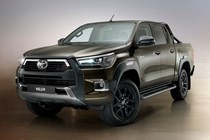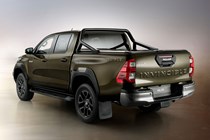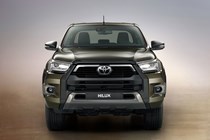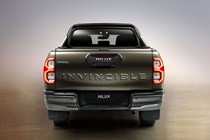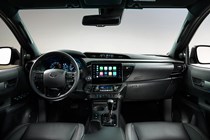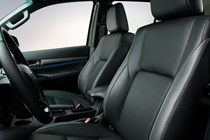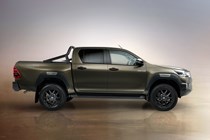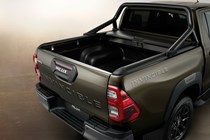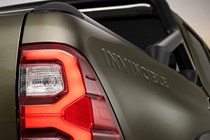UPDATE: We have now driven the new 2.8-litre Toyota Hilux facelift on and off the road – read all about it in our full Toyota Hilux review.
Toyota has revealed full pricing details of its new Hilux pickup, on sale now. With a bold new design, a revised chassis for improved comfort, and a new 2.8-litre engine for top-spec models, the 2020 Toyota Hilux gets an instant performance boost to compete with the most powerful rivals. We’ve added further technical info to this story now, outlining the changes in more detail.
With the Mercedes-Benz X-Class, the Volkswagen Amarok and the 3.2-litre Ford Ranger all discontinued, the updated 2020 Hilux offers the biggest engine capacity of any pickup available in the UK.
Boasting 204hp, 500Nm of torque and improved on- and off-road driving behaviour, it would seem that Toyota has the makings of a really great truck here for both working and lifestyle buyers. Keep reading for all the official info we have so far, and to view the latest pictures.
Is the 2020 Hilux all-new?
Toyota is referring to it as the ‘new Hilux’, but really this is a ‘renewal’ of the existing model, which first went on sale in the UK in 2016. So the fundamental chassis and body structure remain the same. Which means it retains the strong ladder frame chassis design.
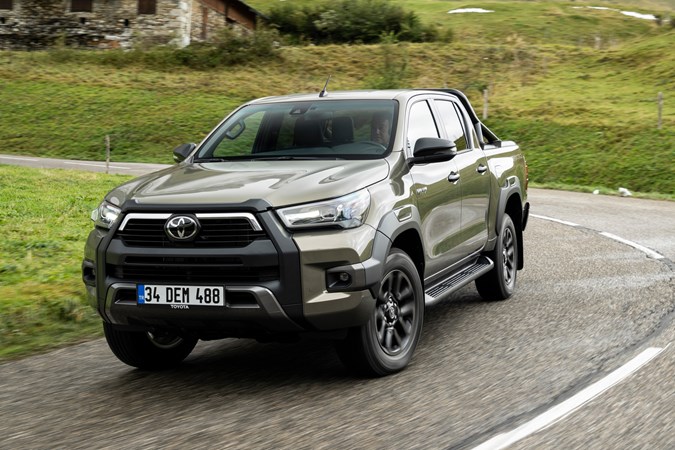
However, as you can see from the pictures, the panels that clothe that body have been given a really good going over, creating what to our eyes looks like a very handsome and muscular pickup. Most of the images here are of the range-topping Invincible X model, but even the very entry-level Active grade gets a new look as well.
Specific visual changes that are worth checking out include the more ‘three-dimensional’ (…!) front grille and bumper design. There are also LED front and rear lights, depending on the trim level, and new 18-inch alloy wheels with a contrast finish. The funky new shade of paint pictured here is called Titan Bronze metallic.
The Invincible X benefits from a number of specific body modifications to make it look even tougher. We’ll come back to this below.
Engine changes for the 2020 Hilux?
The real crowd-pleaser here is sure to be the new 204hp 2.8-litre turbodiesel engine labeled the 2.8D, which is over a third more powerful than the 150hp 2.4-litre motor (labelled 2.4D). That 500Nm torque figure is also a 25% increase over the 400Nm the existing engine musters. The 2.4D will continue in lower spec models.
The big 2.8D is likely to make a dramatic improvement to the driving experience, especially in combination with a new electronic control system that functions like an active limited-slip differential at the rear.
This is fitted from Icon grade upwards, and helps improve traction when driving in rear-wheel drive mode (H2) by directing torque to the wheel with grip while automatically braking the other wheel to stop it spinning. It’s activated by a single press of the VSC Off button for the electronic stability control.
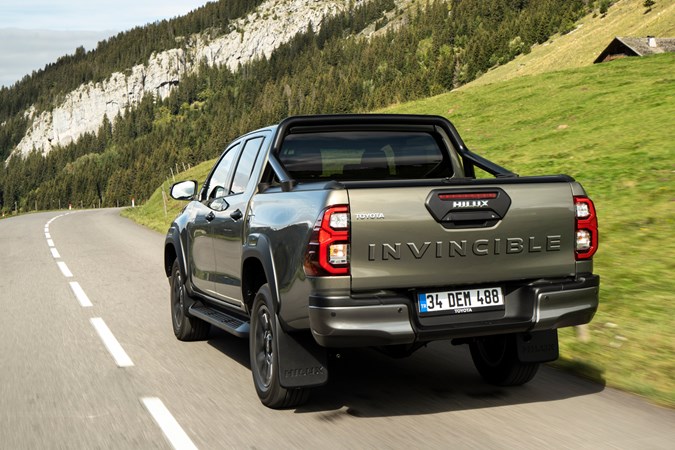
For trickier off-road situations there’s also Active Traction Control (A-TRC), which only works in low-ratio four-wheel drive mode (L4). This meshes with the active differential, and the combination is said to be ‘more efficient than mechanical alternatives.’
Hill start assist in standard on all models, with Toyota’s version of hill descent control – Downhill Assist Control – fitted on Icon models and above.
The VSC electronic stability control has also been updated for improved performance, the accelerator response has been retuned for greater control when driving off-road, and there’s a new tyre angle sensor.
Engine idle speed is also reduced from 850rpm to 680rpm, which should save a tiny bit of fuel and make the Hilux quieter when stationary, but has primarily been added to make the vehicle smoother when pulling away in low-grip situations.
Chassis changes for the 2020 Hilux
In addition to that lot, Toyota has reworked the Hilux’s chassis and suspension, fettling the power steering, retuning the shock absorbers, revising the bushes and changing the springs – including the leaf springs at the rear. As a result, it’s said to be much more comfortable than before, especially over sharp bumps.
Skip to the next section if this doesn’t interest you, but Toyota has dropped all of the details on these changes now.
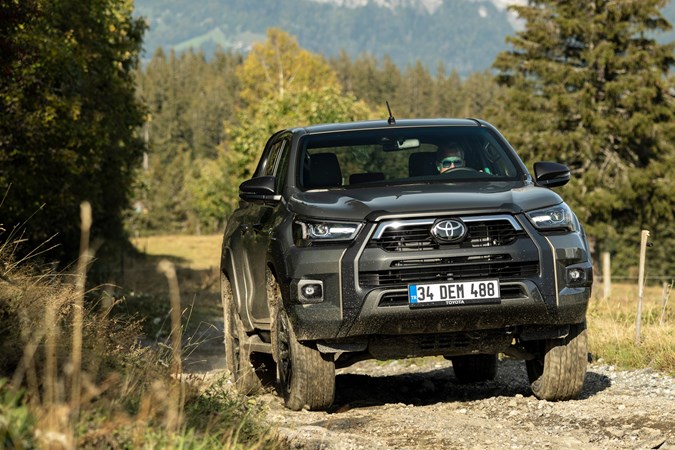
As well as retuning the shock absorbers, Toyota has increased the size of the rear leaf springs by 6% and added a ‘helper leaf contact point’, making them a more sophisticated design than before. At the same time, new bushes – including the rear shackle bush, which is now self-lubricating – are said to make all the suspension movements smoother.
The power-steering changes include a variable flow control system, making it lighter at low speeds for easier manoeuvering and weightier at high speeds for better stability and control. When going straight, the power-steering effectively switches off altogether by entering a ‘standby mode’, saving fuel.
Even with the chassis changes the Hilux has a 29-degree approach angle, 26-degree departure angle and a ‘class-leading’ 310mm of ground clearance for Double Cab models. Wading depth is 700mm.
What’s new on the inside?
Inside the updated Hilux there’s a redesigned instrument cluster and a substantially upgraded 8.0-inch infotainment system called Toyota Touch 2, which is standard from Icon grade and above.
It’s said to be faster, more responsive and comes with actual dials and buttons – so it should be easier to use on the move, especially when travelling over rough ground.

The touchscreen includes Bluetooth, DAB radio, Apple CarPlay and Android Auto, though only top-spec Invincible X models get sat-nav and the new 800W, nine-speaker JBL sound system as standard.
How many versions are there?
As before, the Hilux will be offered in a choice of Single Cab, Extra Cab and Double Cab bodystyles. All have 1.0-tonne payload capacity and 3.5-tonne towing capability.
There are also no surprises for the UK trim levels, which will continue as Active, Icon, Invincible and Invincible X – there are some upgrades to the standard equipment, however.
For instance, entry-level Hilux Active (grey, below) models now get the Toyota Safety Sense package as standard, which includes Pre-Collision System (autonomous emergency braking), adaptive cruise control, lane departure warning and road sign assist. Plus a distinctive new front-end design, which carries on through the rest of the range.
Other features on the Hilux Active include 17-inch wheels, rear differential lock, air-conditioning, automatic headlights, Bluetooth, USB port and a CD player. Single Cab and Extra Cab versions get ‘easy clean’ PVC upholstery. Nice.
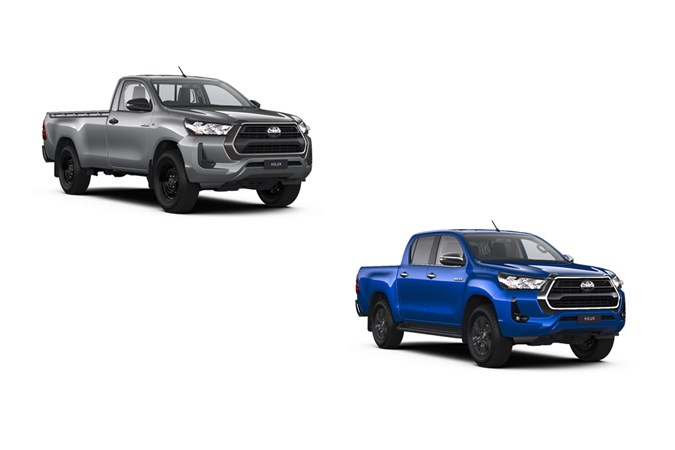
Hilux Icon (blue, above) gains the new Toyota Touch 2 infotainment and active limited slip differential detailed above, in addition to the existing 17-inch alloy wheels, side steps, reversing camera, power-folding door mirrors and LED front foglights.
Hilux Invincible features new 18-inch alloy wheels, front and rear parking sensors, heated front seats and de-icing control for the windscreen wipers. Plus LED headlights, keyless entry and start, and automatic air conditioning.
Go for the range-topping Invincible X, and you get a load of unique bodywork features, including an exclusive grille and front bumper (with skid plate), over-fenders for the wheel arches, specific door handles and a bespoke tailgate. It will be similar to the Hilux in these pictures, though that vehicle isn’t exactly to UK specification.

On the inside, the Invincible X also gets its own instrumentation, black metallic and dark chrome trim accents, ‘clear blue’ door trim illumination (presumably not related to the pregnancy testing brand; Toyota may want to rethink that naming choice), and two-tone perforated leather.
There’s even a unique Hilux Invincible X key. And a nine-speaker JBL sound system.
A wide range of accessories is promised, so customers can ‘personalise their Hilux and equip it to suit their specific work or leisure requirements.’ These include a lockable tailgate, various load covers and a 12v power supply in the load bed.
Any performance details for the new 2.8-litre Hilux?
In addition to the key 204hp and 500Nm figures – these are still to be homologated, but we can’t imagine there will be major changes here – Toyota has revealed that the new 2.8-litre Hilux is substantially faster than the 2.4-litre model, going 0-62mph in 10.0 seconds.
While 0-62mph times probably aren’t the key buying factor for most pickup customers, the Hilux 2.4D does feel rather slow on the road, especially in the most luxurious (and therefore heaviest) Double Cab models. And this is borne out by the figures, as the 2.4 takes as long as 13.2 seconds to achieve the benchmark.
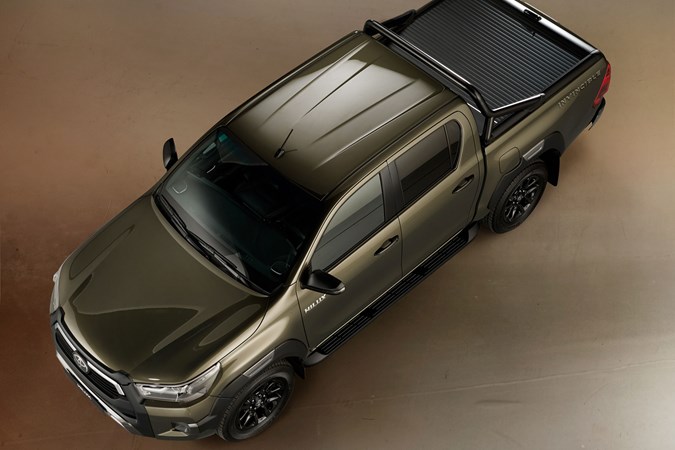
The Hilux 2.8D still isn’t that quick – the now discontinued Mercedes X-Class V6 and most potent VW Amarok V6 models will make the sprint in around seven seconds. But that’s a big enough improvement from Toyota to make a real difference on the road.
All 2.8-litre Hilux sold in the UK will have four-wheel drive, but there is a choice between a six-speed manual and six-speed automatic transmission. The new engine is standard on the Invincible X and an optional upgrade on the Invincible; the rest of the UK Hilux range will make do with the existing 2.4-litre engine.
How much does the new 2020 Toyota Hilux cost and when does it go on sale?
Order books opened for ‘pre-sales reservations’ on 1 September 2020, but this was only for the Invincible and Invincible X models. Prices start at £29,158 (on-the-road but excluding VAT) for a 2.4-litre Invincible – but astonishingly, the new 2.8-litre model costs less than £400 more, at £29,553.
The Invincible X only comes with the 2.8-litre engine, and is priced from £32,533. If you want an automatic transmission in place of the manual gearbox that’s a cost upgrade of £1,500 (including VAT).
Pricing for the new Hilux Active and Hilux Icon was announced on 28 September 2020. Active starts from £22,466 for a Single Cab, £23,716 for an Extra Cab and £24,341 for a Double Cab. The Icon only comes as a Double Cab, and is priced from £26,549 with a manual gearbox, though the auto is available.
Also read:
>> Our main Toyota Hilux review
>> New pickups coming soon and recent launch round-up
>> Volkswagen Amarok discontinued
>> Mercedes-Benz X-Class discontinued
>> Ford Ranger 3.2 discontinued
Just so you know, we may receive a commission or other compensation from the links on this website - read why you should trust us.


